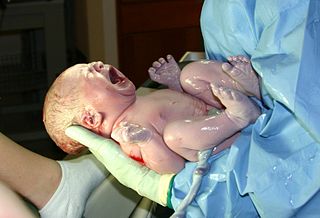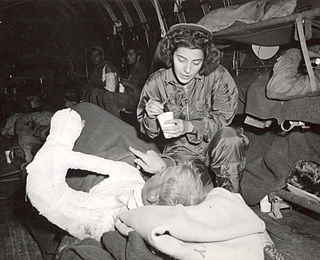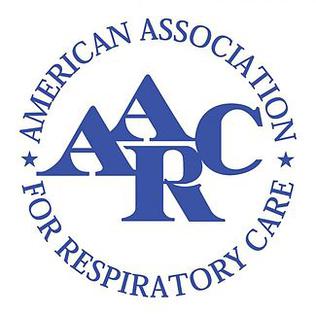Laerdal is a global company that develops products and programs for healthcare providers to help improve patient outcomes and survival. Laerdal solutions are used by voluntary organizations, educational institutions, hospitals, and the military worldwide. Laerdal has 1500 employees in 24 countries. The headquarters is located in Stavanger, Norway.
Lancaster High School is a high school in Lancaster, New York, United States that serves grades 9-12. It is operated by the Lancaster Central School District. The current principal is Cesar Marchioli.

Lotus birth is the practice of leaving the umbilical cord uncut after childbirth so that the baby is left attached to the placenta until the cord naturally separates at the umbilicus. This usually occurs within 3–10 days after birth. The practice is performed mainly for spiritual purposes, including for the perceived spiritual connection between the placenta and the newborn.

Neonatology is a subspecialty of pediatrics that consists of the medical care of newborn infants, especially the ill or premature newborn. It is a hospital-based specialty, and is usually practised in neonatal intensive care units (NICUs). The principal patients of neonatologists are newborn infants who are ill or require special medical care due to prematurity, low birth weight, intrauterine growth restriction, congenital malformations, sepsis, pulmonary hypoplasia or birth asphyxia.

A neonatal intensive care unit (NICU), also known as an intensive care nursery (ICN), is an intensive care unit (ICU) specializing in the care of ill or premature newborn infants. Neonatal refers to the first 28 days of life. Neonatal care, as known as specialized nurseries or intensive care, has been around since the 1960s.

A nurse practitioner (NP) is an advanced practice registered nurse and a type of mid-level practitioner. NPs are trained to assess patient needs, order and interpret diagnostic and laboratory tests, diagnose disease, formulate and prescribe treatment plans. NP training covers basic disease prevention, coordination of care, and health promotion, but does not provide the depth of expertise needed to recognize more complex conditions. According to the American Association of Nurse Practitioners, a professional membership association for NPs, NPs are educated at the graduate level to provide "primary, acute, chronic, and specialty care to patients of all ages", depending on their field of practice.
Nursing credentials and certifications are the various credentials and certifications that a person must have to practice nursing legally. Nurses' postnominal letters reflect their credentials—that is, their achievements in nursing education, licensure, certification, and fellowship. The letters usually appear in the following order:
Advanced Emergency Medical Technician - Critical Care (AEMT-CC) is an Emergency Medical Services (EMS) certification unique to New York. The curriculum for AEMT-CC's in New York is similar to that of the national standard EMT-I/99 but with a broader scope of practice. EMT-CCs are fully classified as Advanced Life Support (ALS) providers within New York and are trained in advanced airway management, including intubation, IV fluid administration, cardiac monitoring, cardiac pacing, and both synchronized and unsynchronized cardioversion, and medication usage/administration in adult and pediatric patients.
Jupiter Environmental Research and Field Studies Academy at Jupiter Community High School is a four-year Magnet school program designed to meet the needs of students who wish to pursue an academic curriculum with emphasis on environmental studies.

Neonatal nursing is a sub-specialty of nursing care for newborn infants up to 28 days after birth. The term neonatal comes from neo, "new", and natal, "pertaining to birth or origin". Neonatal nursing requires a high degree of skill, dedication and emotional strength as the nurses care for newborn infants with a range of problems, varying between prematurity, birth defects, infection, cardiac malformations and surgical problems. Neonatal nurses are a vital part of the neonatal care team and are required to know basic newborn resuscitation, be able to control the newborn's temperature and know how to initiate cardiopulmonary and pulse oximetry monitoring. Most neonatal nurses care for infants from the time of birth until they are discharged from the hospital.

A flight nurse is a registered nurse who specialises in the field of providing comprehensive pre-hospital, emergency critical care, and hospital care to a vast scope of patients. The care of these patients is generally during aeromedical evacuation or rescue operations aboard helicopters, propeller aircraft or jet aircraft. On board a rescue aircraft you would find a flight nurse accompanied by flight medics and respiratory practitioners, as well as the option of a flight physician for comprehensive emergency and critical transport teams. The inclusion of a flight physician is more commonly seen in pediatric and neonatal transport teams. A critical care flight nurse must be able to deal with all age groups with broad critical emergencies. With no physicians on site the nurses scope of practice is expanded. The critical care experience is transferred over to a flight nurse with impacting factors such as altitude and changes in pressure, gravitational forces, and weather. Some patients may experience exacerbation's because of factors related to the cabin environment including hypoxia, limited mobility, gas expansion, and risk of injury related to turbulence and resources with definitive care are limited. Aeromedical evacuation crews coordinate with other organizations to plan for the safe and timely care and evacuation of patients. Crews must be prepared for patients suffering from trauma and mental health illnesses.
Pediatric Advanced Life Support (PALS) is a 2-day American Heart Association training program co-branded with the American Academy of Pediatrics. The goal of the course is to aid the pediatric healthcare provider in developing the knowledge and skills necessary to efficiently and effectively manage critically ill infants and children, resulting in improved outcomes. Professional healthcare providers use PALS during the stabilization and transportation phases of a pediatric emergency, in or out of hospital.
Advanced Life Support in Obstetrics (ALSO) is a program that was developed by the American Academy of Family Physicians (AAFP). This course helps physicians, certified nurse midwives (CNM), registered nurses, and other health care providers involved in potential emergencies in the perinatal care of mothers. This course is important and even required in some hospitals for family practice physicians as well as a learning tool in most family practice residency programs. ALSO was developed by Dr. Damos and Dr. Beasley, from the Department of Family Medicine at the University of Wisconsin.

A pediatric intensive care unit, usually abbreviated to PICU, is an area within a hospital specializing in the care of critically ill infants, children, teenagers, and young adults aged 0-21. A PICU is typically directed by one or more pediatric intensivists or PICU consultants and staffed by doctors, nurses, and respiratory therapists who are specially trained and experienced in pediatric intensive care. The unit may also have nurse practitioners, physician assistants, physiotherapists, social workers, child life specialists, and clerks on staff, although this varies widely depending on geographic location. The ratio of professionals to patients is generally higher than in other areas of the hospital, reflecting the acuity of PICU patients and the risk of life-threatening complications. Complex technology and equipment is often in use, particularly mechanical ventilators and patient monitoring systems. Consequently, PICUs have a larger operating budget than many other departments within the hospital.
Air Evac EMS, Inc., operating as Air Evac Lifeteam, is the largest company within AMGH. Air Evac is still the largest independently owned and operated HEMS, or air ambulance provider. Air Evac currently operates helicopters at 131 bases, covering most of the central and southern states; Service Area. While primarily a HEMS provider, they do operate 2 fixed-wing aircraft in Missouri and Kentucky. Originally based in West Plains, Missouri, the headquarters, dispatch (CenComm), and a few other departments were moved to a new facility in O'Fallon, Missouri in 2013.

Dr. Karthik Nagesh is a neonatologist in India. He has been practicing neonatal intensive care since 1992 at the Manipal Hospital in Bangalore. He is well known in India for his pioneering work in intensive care for sick neonates especially, Surfactant Therapy and ventilation for sick babies with respiratory distress. He is currently the Chairman of the Manipal Advanced Children's Center and Chairman and HOD of Neonatology and Neonatal ICUs at the Manipal Hospitals Group as well as an adjunct professor of paediatrics, KMC at Manipal University.

The American Association for Respiratory Care (AARC) is a non profit organization and is the only professional organization supporting Respiratory Care in the United States. In addition to attempting to help lobby for beneficial legislation nationally and locally, the AARC is trying to promote the profession as a whole to increase interest and membership. The AARC began in 1943, as the Inhalation Technician Association and has evolved rapidly and repeatedly since.
A Critical Care Transport Nurse is a Registered Nurse specialized in care in the pre-hospital setting. These are mostly air-medical personnel or critical care transport providers with specialized training and experience in pre-hospital care. Such nurses are required by their employers to seek additional certifications beyond basic nursing licensure and are often required to have three years (minimum) of full-time experience in emergency and/or intensive care. Certifications requirements vary but often include advanced cardiac life support (ACLS), basic life support (BLS), pediatric advanced life support (PALS), neonatal resuscitation program (NRP), trauma nursing core course (TNCC), and Advanced Trauma Life Support (ATLS), in addition to Pre-Hospital Trauma Life Support (PHTLS). Standards also include being board certified in Emergency Nursing (CEN), Critical Care Nursing (CCRN), and Ground Transport (CTRN) or Flight Nursing (CFRN) respectively. In some regions these nurses are authorized to operate base station phones for medical command. Some states allow them to operate entirely under standing orders while on a ground ambulance or air medical unit. Training also includes specific education relevant to the state and its protocols, and often requires the nurse to train with paramedics for a period of time as well as taking an additional exam administered by their medical director before being allowed to operate on a ground ambulance or air medical unit. Many of these nurses hold certifications as Emergency Medical Technicians or Paramedics, and in some states are required to, but it is not the standard of practice.

Dr. Vinod Kumar Paul is an Indian pediatrician and physician scientist currently serving as Member, NITI Aayog. He earlier served as Professor of Neonatology at the Department of Pediatrics, All India Institute of Medical Sciences (AIIMS), New Delhi from 1985 to 2020. He is associated with India's health policy as well as child and maternal health programs..










